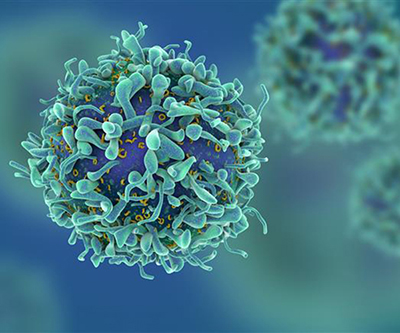
Stock image of T cells
NICHD researchers study how immune activity is regulated through receptors found on cell surfaces. In a recent study from the Love Lab, researchers evaluated immune cells called T cells, which are activated through their T cell receptors (TCR). TCRs are complex structures compared to other immune receptors, and they contain 10 signaling motifs called ITAMs. Despite decades of research on TCRs, scientists don’t know why TCRs have so many ITAMs, which are spread across six receptor subunits called CD3.
- To study the role of these ITAMs, the lab used a special mouse model where three ITAMs, the ones found on CD3ζ, were selectively inactivated.
- Surprisingly, the study team found that T cells with inactivated ITAMs could not tell the difference between “low-affinity” and “high-affinity” signals, causing the cells to overreact to stimuli that would typically not cause a significant immune reaction.
- The results suggest an inhibitory role for CD3ζ ITAMs, which help ensure that T cells respond appropriately.
- The study team also found that if the ITAMs of CD3z chain were inactivated, the T cells did a better job of clearing tumors that express low-affinity ligands. Therefore, the findings offer a potential alternative method for tailoring TCR-mediated cancer immunotherapy.
NICHD co-authors of the paper include Guillaume Gaud, Teri Hatzihristidis, Seeyoung Choi, Jan Lee, and Paul E. Love.
Learn more about the Genetics and Epigenetics of Development Affinity Group: https://www.nichd.nih.gov/about/org/dir/affinity-groups/GED.
 BACK TO TOP
BACK TO TOP